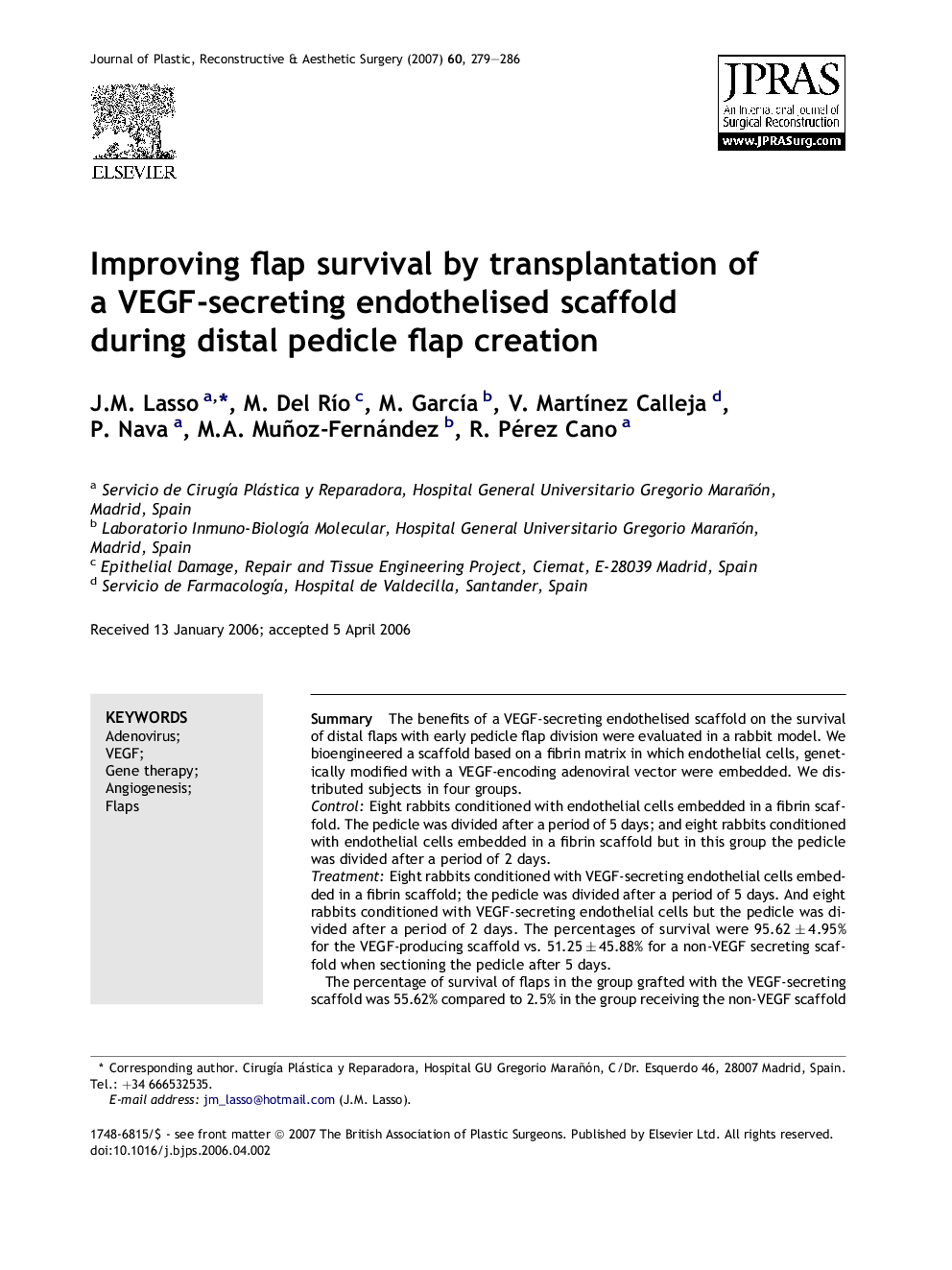| Article ID | Journal | Published Year | Pages | File Type |
|---|---|---|---|---|
| 4122344 | Journal of Plastic, Reconstructive & Aesthetic Surgery | 2007 | 8 Pages |
SummaryThe benefits of a VEGF-secreting endothelised scaffold on the survival of distal flaps with early pedicle flap division were evaluated in a rabbit model. We bioengineered a scaffold based on a fibrin matrix in which endothelial cells, genetically modified with a VEGF-encoding adenoviral vector were embedded. We distributed subjects in four groups.ControlEight rabbits conditioned with endothelial cells embedded in a fibrin scaffold. The pedicle was divided after a period of 5 days; and eight rabbits conditioned with endothelial cells embedded in a fibrin scaffold but in this group the pedicle was divided after a period of 2 days.TreatmentEight rabbits conditioned with VEGF-secreting endothelial cells embedded in a fibrin scaffold; the pedicle was divided after a period of 5 days. And eight rabbits conditioned with VEGF-secreting endothelial cells but the pedicle was divided after a period of 2 days. The percentages of survival were 95.62 ± 4.95% for the VEGF-producing scaffold vs. 51.25 ± 45.88% for a non-VEGF secreting scaffold when sectioning the pedicle after 5 days.The percentage of survival of flaps in the group grafted with the VEGF-secreting scaffold was 55.62% compared to 2.5% in the group receiving the non-VEGF scaffold when the pedicle was sectioned after 2 days. The CD 31 immunostaining studies showed a dramatic increase in angiogenesis in the flaps conditioned by the VEGF-producing scaffolds. These data revealed that endothelised VEGF-secreting scaffold during flap creation could be a suitable approach in reconstructive surgery.
